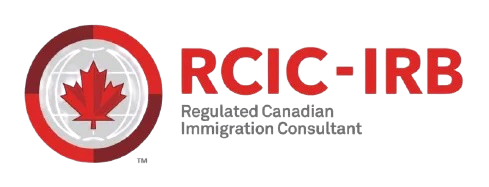IRCC Tightens Rules for Intra-Company Transferees: Stricter Guidelines for Work Permits
Immigration, Refugees and Citizenship Canada (IRCC) has introduced new updates to its Intra-Company Transferee (ICT) program, effective October 3, 2024. These changes are aimed at tightening the requirements for employers and foreign workers seeking work permits through the International Mobility Program (IMP), making it more challenging to qualify for transfers. Here’s what you need to know.
What is the International Mobility Program?
The International Mobility Program (IMP) allows Canadian employers to bring foreign workers into the country without requiring a Labour Market Impact Assessment (LMIA). This process is typically faster than LMIA-based work permits, which require employers to prove that hiring a foreign worker will not negatively affect the Canadian labor market.
One of the main pathways under the IMP is the Intra-Company Transferee (ICT) stream, where employees of multinational companies can transfer to their company’s Canadian branch. However, the recent updates add more stringent criteria to the ICT pathway.
Stricter Requirements for Intra-Company Transferees (ICTs)
Under the new rules, IRCC has introduced stricter requirements for both employers and employees applying under the ICT program.
Key Updates:
Multinational Corporation Status: Employers must now prove that they are a legitimate multinational corporation (MNC) with revenue-generating operations in at least two countries. This ensures that only established international enterprises can benefit from the ICT pathway.
Clarification on Specialized Knowledge: Officers are now required to carefully assess whether an employee has the specialized knowledge required for their role. The new guidelines clarify what qualifies as specialized knowledge and how it should be evaluated for ICT eligibility.
Single Page Instructions: All ICT guidelines have been consolidated into a single reference page, making the process more streamlined but also more transparent and easier to scrutinize.
No Workforce Transfers: The new guidance discourages using ICTs to transfer general employees to affiliated Canadian entities, ensuring that only key personnel with specific expertise are transferred.
Documentation Requirements: Officers are reminded to include all evidence related to ICT applications within the Global Case Management System (GCMS), ensuring a thorough documentation process.
Free Trade Agreements Related to the International Mobility Program
IRCC has also updated instructions related to free trade agreements (FTAs) that impact the International Mobility Program. These updates are relevant for several agreements, including:
- Canada–United States–Mexico Agreement (CUSMA)
- Canada–Korea Free Trade Agreement
- Canada–European Union: Comprehensive Economic and Trade Agreement (CETA)
The changes standardize how instructions are presented for each FTA, integrating guidance on assessing ICTs and providing clear, accessible overviews.
IRCC’s Broader Temporary Resident Reforms
The new rules for ICTs are part of a broader push by IRCC to reduce the number of temporary residents in Canada.
Lowering Temporary Resident Numbers:
- Immigration Minister Marc Miller has set a goal to lower the percentage of temporary residents from 6.5% to 5% of Canada’s population over the next three years.
- This goal includes reducing the number of study permits, post-graduation work permits (PGWPs), and spousal open work permits issued in the coming years.
Impacts on the Temporary Foreign Worker Program (TFWP)
IRCC’s reforms also target the Temporary Foreign Worker Program (TFWP), which relies on LMIA-based work permits. As of September 26, Canada suspended processing the low-wage stream of the TFWP for regions where the unemployment rate exceeds 6%.
What’s Next? IRCC Levels Plan to Include Temporary Resident Targets
On November 1, IRCC will release its 2025 Immigration Levels Plan, which, for the first time, will include specific targets for temporary residents. This plan will set the direction for Canada’s immigration goals over the next few years and is expected to reflect IRCC’s commitment to scaling back temporary resident programs.
Stricter Rules, Fewer Temporary Residents
The changes to the Intra-Company Transferee program mark a significant shift in how foreign workers will gain access to Canada through the International Mobility Program. With stricter requirements for multinational employers and more rigorous definitions of specialized knowledge, these reforms align with the government’s efforts to reduce reliance on temporary residency while addressing labor market needs more strategically.
Employers and applicants must now navigate these changes carefully to ensure compliance and successful applications under the updated guidelines.
Need Help with your ICT application?
Reach out today to start your journey toward Canadian permanent residence with confidence.




